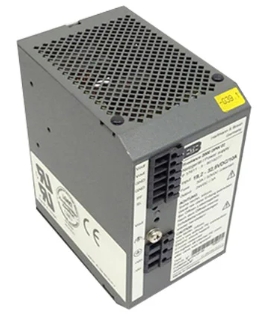In the realm of industrial automation, communication processors play a pivotal role by ensuring seamless communication between various devices, thereby enhancing the efficiency and reliability of the entire production system. The ABB DPW02, as a communication processor, has garnered favor among numerous industrial users owing to its exceptional performance and wide range of applications.

1. Parameters and Specifications of ABB DPW02
While specific parameters and data may vary depending on the product model and configuration, the ABB DPW02, as a communication processor, typically boasts the following key parameters:
- Communication Interfaces: Supports multiple communication protocols and interfaces, such as RS-485 and PROFIBUS, to meet the communication needs of different devices.
- Processing Speed: Equipped with high-speed data processing capabilities, ensuring real-time and accurate communication transmission.
- Data Capacity: Possesses sufficient memory space to store large amounts of data during communication processes, supporting rapid data retrieval and transmission.
- Protection Level: Often features a high protection level, such as IP65 or higher, to adapt to harsh industrial environments.
2. Features of ABB DPW02
- High Reliability: Utilizing modern large-scale integrated circuit technology, combined with stringent production processes and anti-interference techniques, the ABB DPW02 ensures high reliability. It maintains stable performance in harsh industrial environments, providing reliable communication support for production systems.
- Strong Anti-Interference Capability: Tailored for the complex electromagnetic environments of industrial sites, the ABB DPW02 possesses robust anti-interference capabilities. It effectively resists external electromagnetic interference, ensuring the accuracy and integrity of communication data.
- Easy Configuration and Maintenance: The ABB DPW02 offers an intuitive configuration interface and a wealth of diagnostic tools, enabling users to easily configure devices and troubleshoot issues. Additionally, it supports remote monitoring and fault diagnosis, further reducing maintenance costs.
- Broad Compatibility: Supporting multiple communication protocols and interfaces, the ABB DPW02 seamlessly integrates with most PLCs, inverters, touch screens, and other devices on the market. This broad compatibility makes it highly promising for widespread application in the industrial automation field.
3. Applications of ABB DPW02
With its outstanding performance and wide range of applications, the ABB DPW02 plays a crucial role in the industrial automation sector. Here are some of its main application areas:
- PLC Control Systems: In PLC control systems, the ABB DPW02 serves as a communication processor, facilitating communication between the PLC and other devices. It accurately transmits control commands from the PLC to actuators and promptly feeds back status information from the actuators to the PLC, ensuring stable operation of the entire control system.
- Inverter Control Systems: In inverter control systems, the ABB DPW02 enables communication between inverters and upper-level computers or touch screens. It real-time transmits the operating status and parameter information of the inverters to the upper-level computers or touch screens, facilitating user monitoring and operation.
- Robot Control Systems: In robot control systems, the ABB DPW02 acts as a communication bridge, enabling communication between robots and other devices. It accurately transmits motion commands and sensor information from the robot to other devices, facilitating coordinated operation of the robot.
Furthermore, the ABB DPW02 can be applied in remote monitoring systems, data acquisition systems, and other fields, providing comprehensive communication solutions for industrial automation.
Product website:
https://www.3splc.com/DPW02_c0_ss
As an outstanding communication processor, the ABB DPW02 plays a vital role in the industrial automation sector with its high reliability, strong anti-interference capability, ease of configuration and maintenance, and broad compatibility. Whether in PLC control systems, inverter control systems, or robot control systems, it provides users with stable and reliable communication support.
